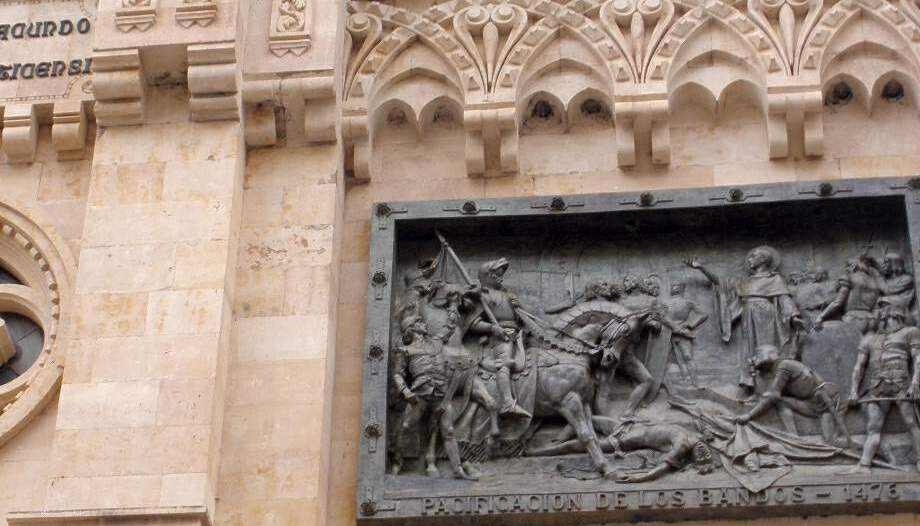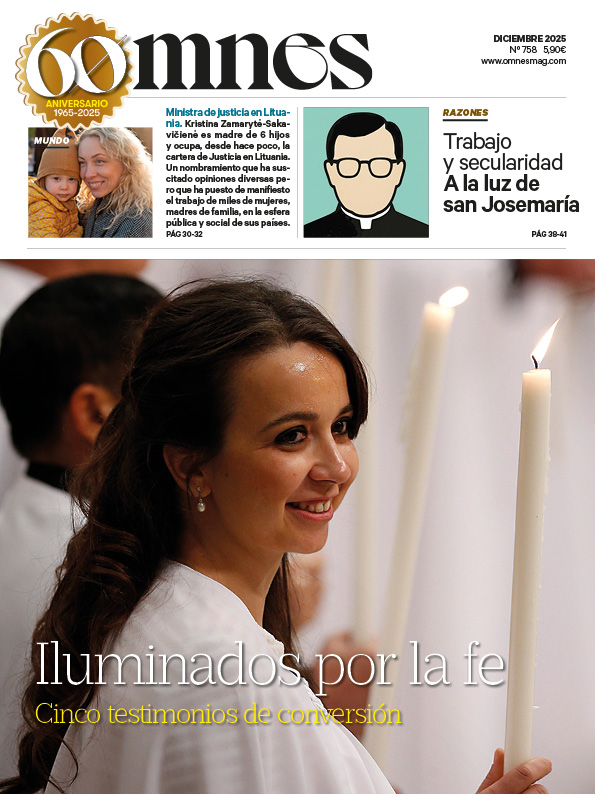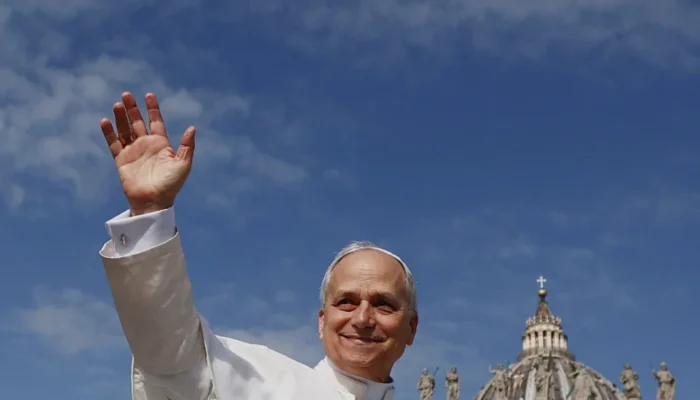St. Leo III, Pope after the death of Hadrian I (795 to 816), was a Roman. Although elected unanimously, he soon suffered opposition from part of Rome, which even tried to assassinate him. had to flee. For his part, St. John of Sahagún was the first Spanish saint of the Order of St. Augustine.
The Roman Martyrology says about St. Leo III: "In Rome, in the basilica of St. Peter, St. Leo III, Pope, who crowned as Roman emperor the king of the Franks, Charlemagne, and distinguished himself for his defense of the true faith and the divine dignity of the Son of God († 816)". Leo III combated the heresy that saw Jesus the man only as an adopted son of God, collects the Vatican Sanctuary
Leo III was buried in St. Peter's (June 12, 816), where his relics are kept, along with those of the also holy Leo I (Leo the Great), Leo II and Leo IV. He was canonized in 1673. The silver denarii of Leo III still in existence bear the name of the emperor in addition to Leo. They show the emperor as protector of the Church and lord of the city of Rome.
Promoter of peace and coexistence
The Church also remembers today the figure of Juan de Sahagún, saint Augustine Spanish who dedicated himself to preaching and to the promotion of peace and social coexistence in a divided and confrontational city. His love for the Eucharist and his charitable attitude towards the most needy people have also been highlighted.
He was born around the year 1430 in Sahagún de Campos (León), a passage for pilgrims on their way to Santiago de Compostela. He received his early education from the Benedictine monks, who then had a monastery in Sahagún. He moved to Salamanca when he was thirty-three years old to dedicate himself to study. There he wore the Augustinian habit Juan de Sahagún, on June 18, 1463.
Sacred Scripture, Eucharist, Dialogue
He loved study, especially the study of Sacred Scripture. The evangelical freedom of his preaching brought him persecution for truth and justice. His mediation made possible a pact of perpetual concord between two warring factions that were a sign of discord and division in the city of Salamanca. The Eucharist was the source of his strength and courage. Friar John died in the convent of St. Augustine on June 11, 1479, at the age of forty-nine.
With the birth of the new Province (2019), the following were chosen San Juan de Sahagún as the holder of the same, for the element of concord and peace of his person. His capacity for dialogue and mediation, the Augustinians point out, is based on an evangelical value of the Beatitudes: "Blessed are the peacemakers, for they shall be called children of God" (Matthew 5:9).







